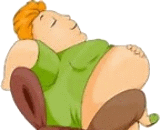Spontaneous Obesity (SO)
[Edit]
Dormice (Glis glis) undergo spontaneous cyclic changes in food intake and body weight. These infradian cycles with a periodicity of about 2 mo are endogenously controlled, since they persist in conditions of constant temperature and photoperiod. To evaluate the role of insulin as an effector of hyperphagia and fattening in dormice, experiments were conducted to study pancreatic function and adipose tissue metabolism during several phases of the infradian cycle. During the weight loss phase, peripheral insulin resistance occurs in the absence of hyperinsulinism. This resistance is not corrected by weight loss.
Organism species: Mus musculus (Mouse)
| CATALOG NO. | PRODUCT NAME | APPLICATIONS | |
| Models | DSI767Mu01 | Mouse Model for Spontaneous Obesity (SO) | n/a |
| Tissues | n/a | Tissue of Spontaneous Obesity (SO) (If Necessary) | Tissue Customized Service Offer |
| Serums | n/a | Serums of Spontaneous Obesity (SO) (If Necessary) | Serums Customized Service Offer |
Organism species: Rattus norvegicus (Rat)
| CATALOG NO. | PRODUCT NAME | APPLICATIONS | |
| Models | DSI767Ra01 | Rat Model for Spontaneous Obesity (SO) | n/a |
| Tissues | n/a | Tissue of Spontaneous Obesity (SO) (If Necessary) | Tissue Customized Service Offer |
| Serums | n/a | Serums of Spontaneous Obesity (SO) (If Necessary) | Serums Customized Service Offer |
Organism species: Oryctolagus cuniculus (Rabbit)
| CATALOG NO. | PRODUCT NAME | APPLICATIONS | |
| Models | n/a | Model for Spontaneous Obesity (SO) | Disease Model Customized Service Offer |
| Tissues | n/a | Tissue of Spontaneous Obesity (SO) (If Necessary) | Tissue Customized Service Offer |
| Serums | n/a | Serums of Spontaneous Obesity (SO) (If Necessary) | Serums Customized Service Offer |
